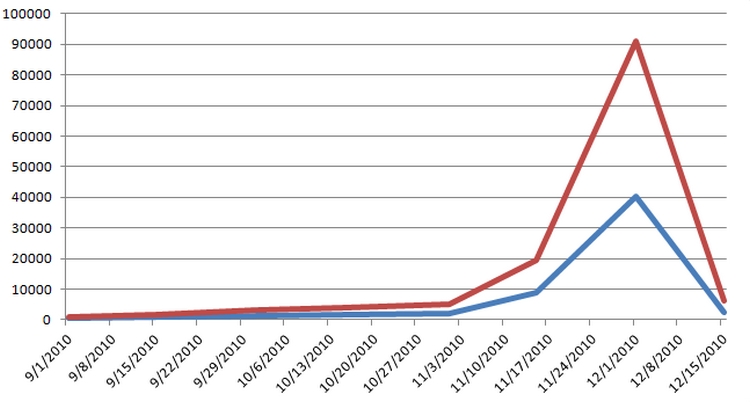
COP16 Was a Focused Community and How One Can Know
Representatives of the nations of the world meet each November-December to consider what they might do to mitigate the impending environmental catastrophe. COP16 met in Cancun, Mexico in 2010. The change the nations have been able to bring about has been modest. But one of the big changes during the16 years of their meetings is in the ability to communicate. The infrastructure has changed dramatically and institutions have grown up to help people take advantage of the infrastructural changes. The new media greatly facilitate their ability to communicate, and official and unofficial delegates have taken full advantage of the new media. Twitter is a medium of communication they were actively using in preparation for and during the meeting in 2010. Because Twitter messages are by default public it is possible to examine the network they constituted in their communication.
The argument at this point: Twitter communication in connection with COP16 constituted a focused community. The Twitter messages containing COP16 for September through December of 2010 are used to show what it would mean to be a focused community in this new media environment.
There were 131,022 messages containing COP16 posted to Twitter. Most were posted immediately before and during the meeting. The figure shows the distribution in time aggregated to two week intervals.
 |
The red line tracks the total number of Twitter messages. The blue line tracks the portion of the messages that were retweets. Retweets were 40% to 45% of all messages for each two week period.
Retweeting is active networking. It is reading messages posted by others and sending them along to followers. Individuals who are retweeting are both reading and writing, but it is a specialized form of writing. It connects an original author to the self and to one's followers. It is saying to the followers that this is what is being said. It is not just me. It is what we are saying. And in that act it constitutes a wider we who are in communication.
The network is the flow of messages between persons. There were 31,640 persons who posted at least one message. Of those 20,979 were individuals who retweeted at least once. Two-thirds of those posting a message posted a retweet. This is the number that suggests a focused community. Two-thirds of the individuals interested enough to write about COP16 are also reading and passing along what they are reading.
Two-thirds does not have much meaning standing alone. I looked a three other streams of communication to give meaning to this number.
On the 19th of September 2011 President Obama announced his plan for reducing the nation's debt. I was able to capture 108,469 Twitter messages that day which included the president's name. The number of messges that were retweets was 37,326 or 34%. That is only a bit lower than retweeting about COP16. However, the big difference is in the percentage of the individuals posting messages that posted retweets. 61,140 individuals posted a messages with Obama in the message. But only 24,290, or 40%, posted a retweet. This is a case in which many fewer individuals are paying attention to what others are tweeting -- 40% versus 66%. Tweeting was more episodic. It was an expression of their own reaction to the president's message more than a joining together in communication.
A similar case is the stream of messages about terrorism; messages that contain the word "terrorism." I collected 118,345 messages containing terrorism between March 14, 2011 and April 28, 2011. Individuals posting a message totaled 56,055, but only 19,369 posted a retweet. Thirty-four percent of the people posting a message about terrorism posted a retweet. Again this seems episodic. Something happens. People give their reaction by posting a note to Twitter. It does not seem joining together in communciation.
The percentage of persons tweeting about COP16 who are engaged in communicating together is substantially greater than in these two cases. To make the point about joining together in communication stronger I looked at Twitter messages containing #Feb14 which was the hashtag of the Bahrainian revolt. Revolt against tyrants is a situation in which we must stand together. If we are divided we are cut down. And the messages posted to Twitter have exactly that appearance. Between February 15, 2011 and February 26, 2011 144,762 messages were posted to Twitter by 19,645 individuals. Ninety percent, 17,773, of the individuals posted one more more retweets. We are in it together in the streets. We are in it together in our communication.
Two-thirds of the individuals who posted a message about COP16 were reading and saying this is what we are saying to their followers. That gives one parameter for the network. The active network of communicators is substantial. It is most of the people posting messages. The 'shape' of the messaging within this network of communicators is next.
©G. R. Boynton, 2011